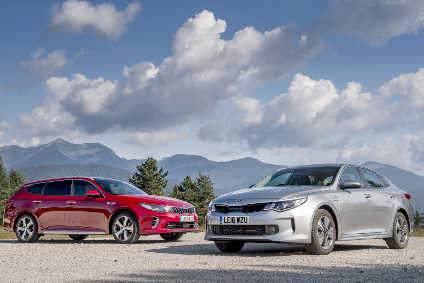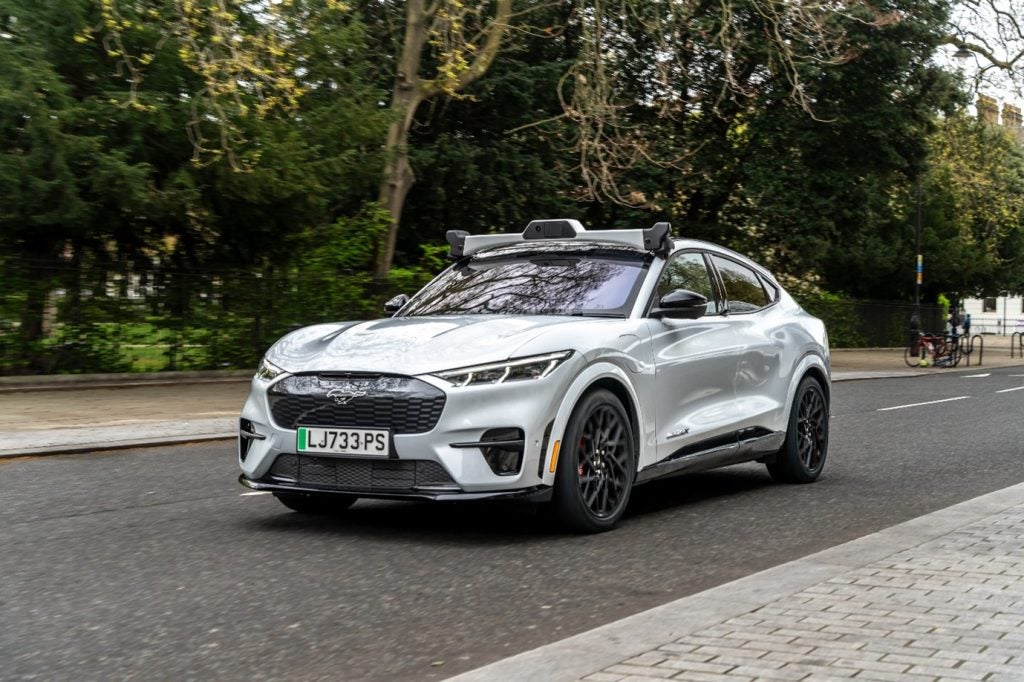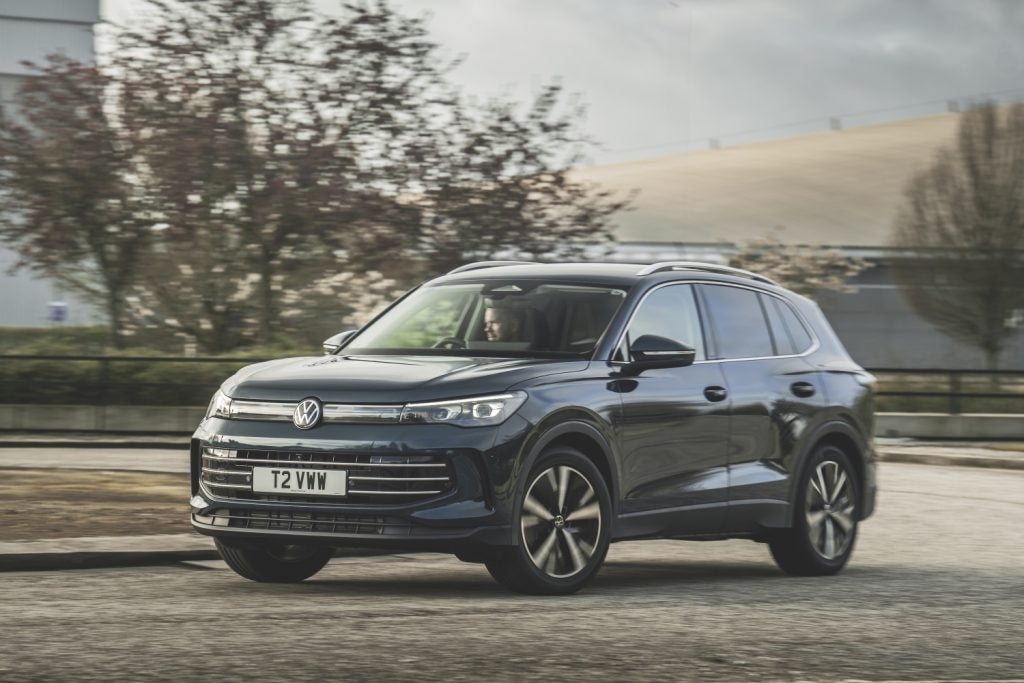
While other car makers are scaling down their model ranges in Europe’s non-premium D segment, Kia is doing the opposite. A new estate and a PHEV saloon are new additions to the Optima range. Last month, they even helped Kia to outsell Hyundai in the UK.
Kia has taken a close look at how Volkswagen manages to sell a vast number of Passats across European markets, despite the D segment supposedly having been taken over by the Mercedes-Benz C-Class and Audi A4.
Even before the new Sportswagon and petrol-electric plug-in sedan have had a chance to rack up many sales, the Optima is having a good year. Europe-wide registrations numbered 6,320 over the first ten months of 2016. The UK is the car’s best regional market, registrations here totalling in excess of 1,200 units over that period.
The boost from the wagon alone could well push Optima sales close to the 10,000 cars level by year end, and certainly far higher in 2017. Granted, that’s tiny compared to what the Passat does – 63,000 in Germany for the year to the end of September – yet it does show that Kia can see an opportunity where others don’t. Look at GME: the next Insignia won’t be offered as a saloon, which could be a mistake. Will buyers in markets where large sedans are more popular that hatchbacks turn away from Opel and Vauxhall?
The Optima is never going to be a major model for Kia Motors Europe but elsewhere it’s enormously successful; the US, for instance. As at the end of October, deliveries totalled 99,301 cars but the impact of SUVs on its segment is obvious when you see how big a drop that number represents over the same period in 2015. This time last year, KMA had sold 132,684 units of the sedan which it builds in Alabama. Worldwide, Optima deliveries numbered 186,496 during 1 January-31 October.
In the home market, the Optima is known as the K5. There, the trend towards SUVs is especially obvious, sales of large saloons having dropped markedly in recent months, while the Hyundai Santa Fe and Kia Sorento have surged into first and second places. Some of that is due to buyers knowing that a new Hyundai Grandeur will soon be released but nonetheless, sales of the Kia Sportage, SsangYong Tivoli and the new Samsung QM6 (exported as the Renault Koleos) are also strong.
How well do you really know your competitors?
Access the most comprehensive Company Profiles on the market, powered by GlobalData. Save hours of research. Gain competitive edge.

Thank you!
Your download email will arrive shortly
Not ready to buy yet? Download a free sample
We are confident about the unique quality of our Company Profiles. However, we want you to make the most beneficial decision for your business, so we offer a free sample that you can download by submitting the below form
By GlobalDataBack in Europe, Optima sales being around a quarter of what they are in South Korea or a tenth of the US level matters not – those roughly 10,000+ units all help Kia’s market share, and given the car’s pricing, profits too. ACEA data reveal that the brand sold 337,595 vehicles (first nine months), versus 295,140 in the first three quarters of last year. Market share has risen from 2.7% to 2.9%.
Buyers waiting for the new C3, especially in France, and big demand for the Sportage are the two main reason why Kia was only 376 vehicles away from outselling Citroën in September: 44,657 for the Korean brand and 45,032 for Citroën gave them each a 3.0% tranche of the EU+EFTA market. Kia has come a long way in the European region since the turn of the century.
The UK is KME’s number one country, deliveries here having reached 79,539 compared to 69,902 for the year to the end of October 2015. The brand’s share of our market is now 3.41%, whereas it was 3.07% in the equivalent period of last year.
Kia outsold Hyundai in the British market last month (6,590 versus 6,585) and that also happened in August. Hyundai remains ahead but only by 695 registrations. It wasn’t that long ago that Kia UK was celebrating attaining 50,000 sales in a calendar year for the first time. The target for 2017 is said to be 91,000 cars.
The number one model for Kia UK is of course an SUV, this being the Sportage, yet without the various lower volume vehicles, and the expansion of the overall range into new segments, brand awareness wouldn’t be rising as quickly as it is. That’s why, even at today’s small volume, the Optima matters. Without this car, it may yet turn out that Kia’s British operations wouldn’t have been able to outsell Hyundai in 2016.
The existing generation saloon is now more than a year old (July 2015 release in South Korea) but the estate and PHEV are only now coming to market. The Sportswagon is mainly for Europe, while the plug-in hybrid is a global model. There is also a hybrid but that’s not available here or in any other European countries.
Aside from the new 2.0-litre petrol-electric option, the four-door car is sold in Britain with a 1.7-litre diesel engine. The estate also has the diesel engine as standard, both body styles being available with six-speed manual or seven-speed dual clutch transmissions. As for the PHEV, this has a six-speed automatic gearbox. All cars for European markets are built in South Korea at the Hwasung plant.
While there are ‘2’ and ‘3’ trim levels for the sedan and Sportswagon, the PHEV comes only in one high-spec form, priced at GBP33,995, but you can deduct GBP2,500 from that for the government grant.
The diesel starts at GBP21,495 as a saloon or GBP22,295 as an estate, prices reaching GBP29,395 and GBP30,595 for the GT-Line S variants. Both body styles are the same length (4,855mm) but due to roof rails, the 1,470mm high Sportswagon is slightly taller. A GT-Line S Sportswagon will be added in early 2017. What about a plug-in hybrid estate? Kia UK told me “The PHEV version of the wagon is currently being discussed and we expect it to be in the UK sometime in the second half of 2017”.
The PHEV saloon is in fact Kia UK’s first such model, the other electric vehicle marketed here being the Soul EV. The Optima is obviously aimed at business users, who in the current tax year will pay only seven percent BIK tax.
Maximum range on the car’s batteries is 33 miles or 50km and in practice it’s not far off that, I found. Running the batteries right down means a recharge from a domestic socket take three hours. If you’re not someone who will be in the habit of plugging the car in after a daily commute of 20 or so miles, then the Optima PHEV probably doesn’t make a lot of sense – the 1.7-litre diesel variants will give you another 10 or more MPG. I saw an average of 42mpg from the plug-in model and most of that was motorway miles at the legal limit.
Given the weight of 1,780kg, performance is fine, with 0-60mph taking 9.1 seconds. Top speed is 119mpg. The CO2 average is an official 37g/km and Combined consumption is 176.6mpg. If you’re wondering what the PHEV’s added mass is compared to the equivalent, it’s about 200kg. Boot space doesn’t suffer much, Kia having cleverly found ways to keep the loss of volume to 15 litres.
To make sure the additional weight didn’t lead to lengthened stopping distance, the PHEV has 300mm diameter rear discs (262mm for the diesels), while the suspension settings are also different to those for the 1.7-litre cars. I couldn’t notice any difference with the steering feel between the diesel Sportswagon and the PHEV saloon but for packaging reasons, the plug-in car has the steering system’s electric motor mounted on the column. In diesel variants, it’s rack-mounted.
Inside the petrol-electric saloon, you notice some differences, such as additional menus on the 8-inch touchscreen which are designed to help you achieve a better range when in EV mode. You can also see the remaining charge in the cells, and should you wish to stay driving on electricity, nearby recharging stations are listed.
As so often happens when I drive an EV or PHEV, the silence seems to encourage smooth and slow take-offs from traffic lights, though there can also be the satisfaction of using both engine and motor for maximum boost out of a junction. System torque is abundant, at 375Nm, and combined power is 202bhp. The petrol engine, incidentally, is a naturally aspirated 1,999cc four-cylinder unit with direct injection. The lithium-ion ploymer battery pack has an output of 9.9kWh.
Turning to the Sportswagon, this feels quite different to drive. There’s less understeer, which is what I noticed first. The tyres are identically sized – 215/55 R17 – which came as a surprise given how many PHEVs have special low rolling resistance tyres. What you can’t have in the PHEV, however, are the sportier 235/45 R18 ones. Even on the standard rims and tyres, the diesel estate’s handling, steering and roadholding are less floaty than the hybrid’s, even if it has a slightly more comfy ride.
The rear seat splits 40:20:40 and this can be done via a one-press operation. Inside the load bay there are sliding luggage rails with built-in harnesses on higher trim levels. Before I drove the new estate, I did think that HMG’s 1.7-litre diesel would be overwhelmed but in practice it does fine. Maximum torque is 340Nm and power is 139bhp. Turbo lag isn’t much of a factor.
Acceleration to 60mph with the manual gearbox is almost identical to that of the PHEV automatic: 9.8 seconds. Choose the DCT instead and this becomes 10.7 seconds. Either way, top speed is 124mph so five more than the PHEV.
Much as you can get used to the silence of the PHEV, my choice of the two cars would have to be the Sportswagon in GT Line S spec. Priced at GBP30,595, it has the DCT gearbox as standard as well as a lot of luxury equipment and convenience features. The estate is well priced, its economy is excellent and it also has good looks in a class where that’s not always the case.
My favourite vehicle in this segment is still the Skoda Superb Estate but when you spec it up to the same level as the Kia (SportLine with the 150PS 2.0 TDI and several option packs), it ends up costing several thousand pounds more. Remembering that Kia offers a seven-year warranty, which is still the best in the business, I can see this model taking ever more sales from the more well known cars in the big estate and saloon class.







